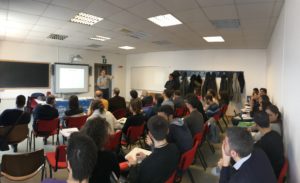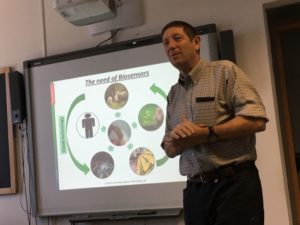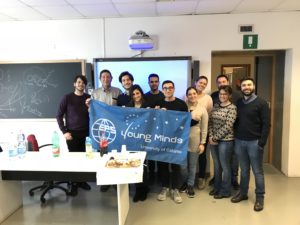Taking into consideration the success of our last theoretical course about General Relativity, lectured by professor Carlos Herdeiro, we opted to embark on other course given by a lecturer from the same research group (Gr@v).
Motivated by our colleagues who wanted to learn Python, we asked professor Valério Ribeiro, a researcher at Gr@v, to give some lectures about how to solve physics problems in that programming language.
The course, which was named Computational Physics, took place from the 8th of March until the 7th of June, once a week, during the afternoon.
In the initial sessions, the professor taught the basics of the Python language, which is incredibly useful in Physics. Each lecture had the duration of 1 hour and a half. After an initial presentation of the methods and the algorithms we were going to use, the sessions were spent solving exercises on personal computers.
The initial attendance exceeded our expectations, registering a surprising number of 33 students, from most of the courses lectured in the Department and even some alumni. These students were allocated in all years of studies, from the 1st year to the 5th year.
Even though the number of students decreased with the number of lectures (as expected), a reasonable number of students stayed, which made the lecturer – student relation more informal.
In the end of the course a certificate (with a template given by EPS) was gave to the students. Each one had the handwritten signatures of the president of our section and the lecturer, Valério Ribeiro, to whom we are thankful for sharing his knowledge with the students.
The feedback of our courses is positive and we intend on continuing on doing them next year.
Volunteers-development weekend
From the 30th of March until the 1st of April 2018 the Rino Foundation had its volunteer development weekend. The weekend was very exciting for everyone involved. The members loved it, learned a lot and the people who gave the workshops were also very excited about the group.
Volunteers at Rino primarily give science shows in the whole country. These shows are given by two presenters. Because the volunteers have to work together, it is very important that they know each other in different manners. On the weekend we organised activities for people to strengthen their bond. We did, for example, a karaoke night. To hear other people try to sing definitely puts people into perspective 😉
In order to enhance presentation skills, we invited an expert in public speaking to the weekend. He gave a very inspiring talk and we did a workshop on debating, which led to interesting discussions, but was especially useful for learning how to communicate in a nice way. He is also a high school teacher and taught us about communicating with kids aged around 15.
The last big thing which was very useful, was the ice cream making workshop. After the Freezing Physics shows the high school kids receive ice cream (made with liquid nitrogen). To find out which ice cream to use next year, we experimented with different kinds of ice cream to test and taste which was the best (see the attached photo).
In short, we learned a lot during the weekend, strengthened the bond between section members (and the board) and enhanced our public speaking skills in a workshop.
Visit to the Astronomical park in Isnello
[singlepic id=421 w= h= float=none]
Since ancient times, the study of the sky was not only of fundamental importance for life, but was always accompanied by a sense of fear and fascination linked to the magic of the cosmos. The scientific discoveries lead us to better knowledge of the universe and its boundaries.
In this frame, we organized a guided tour of the astronomical park “Gal Hassin” in Isnello, in the province of Palermo. It was a unique and formative experience for all the participants that had the possibility to visit and enjoy a park dedicated to the history of astronomy, as well as a spectacular planetarium, and of making night observation of the sky by means of professional telescopes.
After the bus trip from Messina to Isnello, the guided tour started visiting the outdoor astronomical laboratory, the “park of time and space”, with various types of solar clocks and other instruments such as the “Hipparchus Circle”.
Afterwards, we moved to the Planetarium. This fascinating educational machine for the reproduction of the celestial vault, with a dome of 10 m of diameter, is the first digital astronomical planetarium of Sicily; the entire dome is illuminated by 6 high resolution video projectors that make up the 360° image of the whole sky. Isnello’s Planetarium has been a powerful tool for the dissemination of astronomical concepts where the participants have been involved in a charming tour among the Moon, the Sun, the Milky Way galaxy with its constellations, Mars, Saturn, many other celestial bodies and curiosity about our universe.
Anyway, the most awaited moment was the night observation of the sky. So, in a terrace with 12 instruments for astronomical observations, after an initial introduction on several celestial bodies visible to the naked eye, the staff of the park guided us to the use of the different telescopes that allow the observation of planets and nebulae. In particular we could directly observe the Moon and Saturn.
Just after this, a “surprise” refreshment was offered to all the participants by the staff of the park.
The 54 participants were enthusiastic about this amazing experience and they appreciated the economic help received from EPS to pay part of the entrance ticket to the astronomical park.
[singlepic id=419 w= h= float=none]
[singlepic id=423 w= h= float=none]
The Camera Obscura
Unfortunately during this year the Young Minds Section did not have any outreach activity with students in our Headquarters. Therefore we are not able to use the Human-Size camera obscura. However, we build different portable size camera obscura and we brougth it to our outreach activities in the schools. Next year we plan to be part of the science week organized by the University, in this case we are sure we can use the human-size camera obscura.
Regardless the problem to do this activity, the group made an effort to bring students a fresh vision about optics in different school activities, bringing brand new activities like dissecting cow eyes in order to show how an eye works and its parts. Moreover the group is concerned about the important of the gender equality, for this reason we continue collaborating with the city council in an activity called: “A woman scientist in each school” that is its third edition and has a big impact and good acceptance among teachers and students.
Moreover the group is concerned with the professional development of its members and the surrounding scientific community of the University of Santiago de Compostela, for this reason the group has organized several conferences and lectures this year about different topics in optics. In January we brought professor Pieter de Beule from the International Iberian Nanotechnology Laboratory from Braga, Portugal, with the talk: Overview Research Activities Applied Nano-Optics Team. In March, Raul Rangel from CICESE (Mexico) made a conference called: Nano Structured materials for nonlinear optics and wave guiding devices. Finally, in July we brought Prof. Virendra Mahajan from the College of Optical Science with the talk entitled: Axial Irradiance of a focused beam.
Lunch lecture with Swedish Young Minds
The activity was a lunch lecture about gravitational waves held by professor Ulf Gran, with partial aim to promote the Swedish Young Minds section and gain more members. The lecture was held at Chalmers University of Technology (CUT) in Gothenburg on the 20th of April in connection to one of the board’s planning meetings for the Lise Meitner-days event, our annual activity weekend for high school students from all over the country, which is currently the main activity of our section. In that way, all members of the board could be present. Our section was founded very recently so gaining publicity and members are currently our main goals. Providing lunch and an interesting lecture is known to be a successful way to gain publicity that other organisations do from time to time at CUT, and the number of attendants and the response we got indicated that this event was successful as well.
Before the lecture advertisement was made by putting up posters in the physics department building and a few other places, by giving announcements in lecture breaks and by sharing a facebook-event. This turned out to give sufficient publicity to attract more people than the 100 lunches we provided.
We (the board) started with presenting ourselves, the Swedish Young Minds section, what kind of activities we are planning to arrange in the future and why the attendants should become members. For the rest of the lecture we invited professor Ulf Gran to talk about gravitational waves. Professor Gran is known to be a very popular lecturer from the first course in mechanics at the Engineering Physics and Engineering Mathematics programmes, where most of the attendants study. He has also been awarded several pedagogical prices from CUT and was therefore considered a very suitable choice of lecturer.
The lecturer involved a description of the basic concepts concerning gravitational waves and the experiments made to detect them, many illustrating animations and a live demonstration of an interferometer to illustrate the operation principles of the LIGO detector. There were quite a lot of questions both during the lecture and afterwards, and the overall reaction showed that the attendants thought the lecture was very interesting.
The 100 first attendants, which was also the actual number who participated, were provided half a pizza and a soft drink. Providing pizza for lunch was considered a good option with costs comparable to or even less than other common alternatives such as salads or baguettes, and we also believe it was much more appreciated. We also got a small price reduction from where we bought the pizzas (0.5 euro/pizza). After the lecture we handed out a note with instructions for how to become a member, and a few students also stayed and talked both to professor Gran about the lecture and to us about the future plans for our section.
YtY – Space laboratories: space experiments and missions to find our origin.
Students choose university courses mostly upon what they like, but rarely they know what truly means working in a particular area. This is true both for research and industry. There are informative initiatives, but we realised that students want to know about the decision progress older collegues have taken, maybe only a couple of year before them. Then, we organize “Young to Young” (Y2Y) meetings in order to let young speakers tell young students why they decided to start a PhD or to be enrolled by a company or which was their thesis project, presenting their whole experience.
The first Y2Y meeting was presented by Dr. Riccardo Giovanni Urso, graduated at the University of Catania in Science Materials and Nanotechnology. He focused on the fact that his research project concerned the formation of materials in space that led to the origin of life, an interdisciplinary path that gave him the right enthusiasm. He described his work, his results and how he learned from all people he came in contact. At the end, there was time dedicated to questions by students.
Undergraduate students and early master’s students were the target of this meeting. We were able to attract an audience of about 30 people.
We asked all participants to fill a survey. Feedbacks are clear: they appreciated this initiative and all of them will participate next meetings. They also appreciated the fact that a young person was spoke to them. Finally, we need to improve the advertising to reach more students and attract them.
Student Meeting: “Famelab Catania 2018”
Famelab is a science communication competition with the aim of entertain by talking science. Since its launch in 2005 in Cheltenham (UK) Famelab has become the world’s biggest communication contest for scientists, and today the event includes more than thirty countries. This challenge is open to young researchers, university students and anyone involved in science who loves talking about a scientific topic in an effective way. In fact, the competitors have only three minutes to tell the object of their research activity or a fascinating scientific topic to a heterogeneous public (researchers, university and high-school students, families…), only with the help of their communication skills and small objects of everyday life. In each local contest, the “famelabers” are judged by a selected jury (scientists, communicators, journalists…). The jury choose the two winners who will participate to the “masterclass”, a three-days training event with professional science communicator, and then to the national and, eventually, international competition.
Since 2017 Catania is one of the italian selection sites for Famelab, and for the second year EPS Young Minds team has been directly involved in the organization of the event as major sponsor, providing also technical support services. In particular, based on the big success of the 2017 edition in terms of participants and feedbacks from the public, in 2018 the YM section proposed a new three-days format for the local event: two semi-finals and the final contest. In each day, the YM section and invited a high-profile scientist to be part of the jury, and to do a seminar about frontier research topics at the end of contest. The three invited high-level scientists were:
- Barbara Mazzolai, Director of the Center for Micro-BioRobotics of the IIT (Istituto Italiano di Tecnologia), who talked about bioinspired robotics and the future of robotics.
- Luigi Cattivelli, Director of the Genomics Research Center of the Agrigultural Research Council, who presented his research activity on genetics and molecular biology of cereals.
- Eugenio Coccia, Rector of the Gran Sasso Science Institute and one of the authors of the discovery gravitational waves and of the first observation of black holes, who talked about the born of a new astronomy with gravitational waves.
At the beginning and at the end of the three presentations, the speakers did not lose the opportunity to acknowledge the YM section and in general the YM philosophy. A great participation of scientists and students was appreciated not only during the contest but also during the presentations, and there were also strong interactions with the three speakers, moderated and catalysed by the YM members.
Scientific research around us: “Printed Nano-particles Based Bio Sensors”
Sensors are nowadays in everything, always smaller, efficient and interconnected. In our smartphones are irreplaceable tools for the interaction with the touchscreen and for the gesture (i.e. gyroscope, accelerometer etc) as well as for the health monitoring and the interaction with the environment (i.e. hearth rate monitoring, compass, barometer, GPS etc). In the next future, their number will increase exponentially to guarantee new service and security application. Indeed, sensors permit us to understand, monitoring and interact with the environment around us. In these last years, there was an exponential growth of the research about the bio sensoristic with innovative sensing platform based on nanostructures thanks to their innovative properties and the very high surface to volume ratio with respect to bulk materials. In this seminar, the importance of very cheap and interconnected sensors was enfatized also for the smart agricolture in poor country to fight against the scarsely food production. Prof. Shacham is one of the most global experts in this field and proposed an innovative technique to realize very cheap printed sensors based on metal nanoparticles by using special ink in common optimized printers. In this way, the estimate cost amount in large industrial production of these sensors is so cheap to be competitive in third world country agricultures showing new opportunity against the world hunger. The sensors showed are mostly Enzymatic and was exploited in the medical field (i.e. glucose sensing) as well as in environmental monitoring for smart agriculture (i.e. monitoring of plant conditions by the protein expression).
Prof. Shacham has treated with meticulous clarity different topic from screen printing of nanoparticles to biophysics and the functionalization of different material for sensors with a very intressing vision of the next future of the sensors. Finally, Prof. Shacham did not lose the opportunity to acknowledge our YM Section and the general YM philosophy, inviting interessed students and researchers to think to the opportunity to apply for an experience in his laboratories. The primary target of this seminars was mostly graduated and Ph.D. students with the appreciated participation of the undergraduate student, researchers and department professors and we obtain an odience of about 40 people.
In order to have the possibility to host a high-profile scientist, we organize this seminar join in the collaboration of the University of Catania and the University of Palermo about their project of the
inter university Ph.D. in Nanomaterial Science.
After the end of the scientific discussions, further informal scientific interactions were catalyzed by a convivial environment and the students had also the opportunity to interact directly with Prof. Shacham and discover different interessing suggestion about the next future of the sensoristic field by one of the
most recognized scientific expert.
Solar tracker
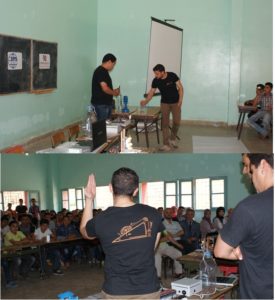 Mghila Béni Mellal USMS section has set up several activities during the 2017. First, visits to schools in Beni Mellal region and the realization of solar tracer project.
Mghila Béni Mellal USMS section has set up several activities during the 2017. First, visits to schools in Beni Mellal region and the realization of solar tracer project.
The focus of our activities is the transmission of technology to high school students and author people, and to show them how they can make practical works and technical projects with simple components and low cost.
First, we have visited a high school in AitAtab (Beni Mellal) and organizing a workshop of science and technology, in this workshop, we try to approach young minds students to technology and how to make a project with simple components and simple acknowledge. These projects are Cnc plotter, line tracer robot, robotic arm, alarm system. We have also visited another school in Fkih Beni Salh, where we organized a great event for more than 300 students from different levels. The objective of this event is show to student how to make a station to measuring some physical magnitudes, and use these measurements to make some simple project. For example Temperature measurement, this system is used to measure the temperature is composed by temperature sensor, Arduino board and an interface to visualize the results, we usually used LabViwe software. An author example is the radiation measurement this system is used to measure the solar radiation by using solar cells sensor.
The students shown great interest in the experiments and greatly thanked our visit, these students really got involved in the activities and due to that, we think they have learned many things. We considered this a very fruitful visit, were we gained also experience in presenting for large audiences.
The second Activity is the realization of a mono-axial solar tracker. The technique used for this study is based on the incident light difference on light-dependent photoresistor (LDR) sensors separated by opaque walls and placed on the PV panel. The control and control circuit performs the function of comparing the signals emitted by the sensors by calculating their differences, and then sends impulses back to the motor to reposition the panel perpendicular to the solar rays. We used in the realization of this project a stepper motor a support of two panels a control circuit composed of an Arduino acquisition card and two photoresistances.
Night events with DTU-Lys
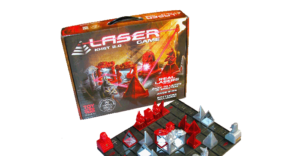 On November 28th 2017 in the evening, our student chapter DTU-Lys held a competition in the board game KHET, which is a complicated form of Chess, but with laser beams. Our student chapter owns 4 of these board games – a perfect number for hosting a competition with both group stages and knock-out rounds! The winner of the tournament was on beforehand promised a DTU-Lys t-shirt, which we had recently acquired a number of for outreach purposes. In total, this evening event numbered around 30 participants, with a good mix of Master students and PhD students.
On November 28th 2017 in the evening, our student chapter DTU-Lys held a competition in the board game KHET, which is a complicated form of Chess, but with laser beams. Our student chapter owns 4 of these board games – a perfect number for hosting a competition with both group stages and knock-out rounds! The winner of the tournament was on beforehand promised a DTU-Lys t-shirt, which we had recently acquired a number of for outreach purposes. In total, this evening event numbered around 30 participants, with a good mix of Master students and PhD students.
The evening started out with a 15 min introduction to our student chapter DTU-Lys, who we are, what we have done, and what plan to do. With the event taking place only half a month from our annual meeting and election in December, it was our hope, and plan, to lure in new potential active board members of DTU-Lys. Our current board now counts 4 new members who all participated in this event.
After the introduction, we divided people into four groups who were to play each other in order to decide who advanced from the group-stage and into the knock-out stage. We used chess-clock apps on our phones to make sure that the games did not continue in all eternity (this was an issue in the beginning) and to add an extra stress factor. During the night people had free access to beers and sodas, and after 1½ hour of playing everyone sat down and had pizza together.
All-in-all it was a very fun and social evening, and many of the participants urged us to organize a similar event in the spring 2018 – which we will certainly do!

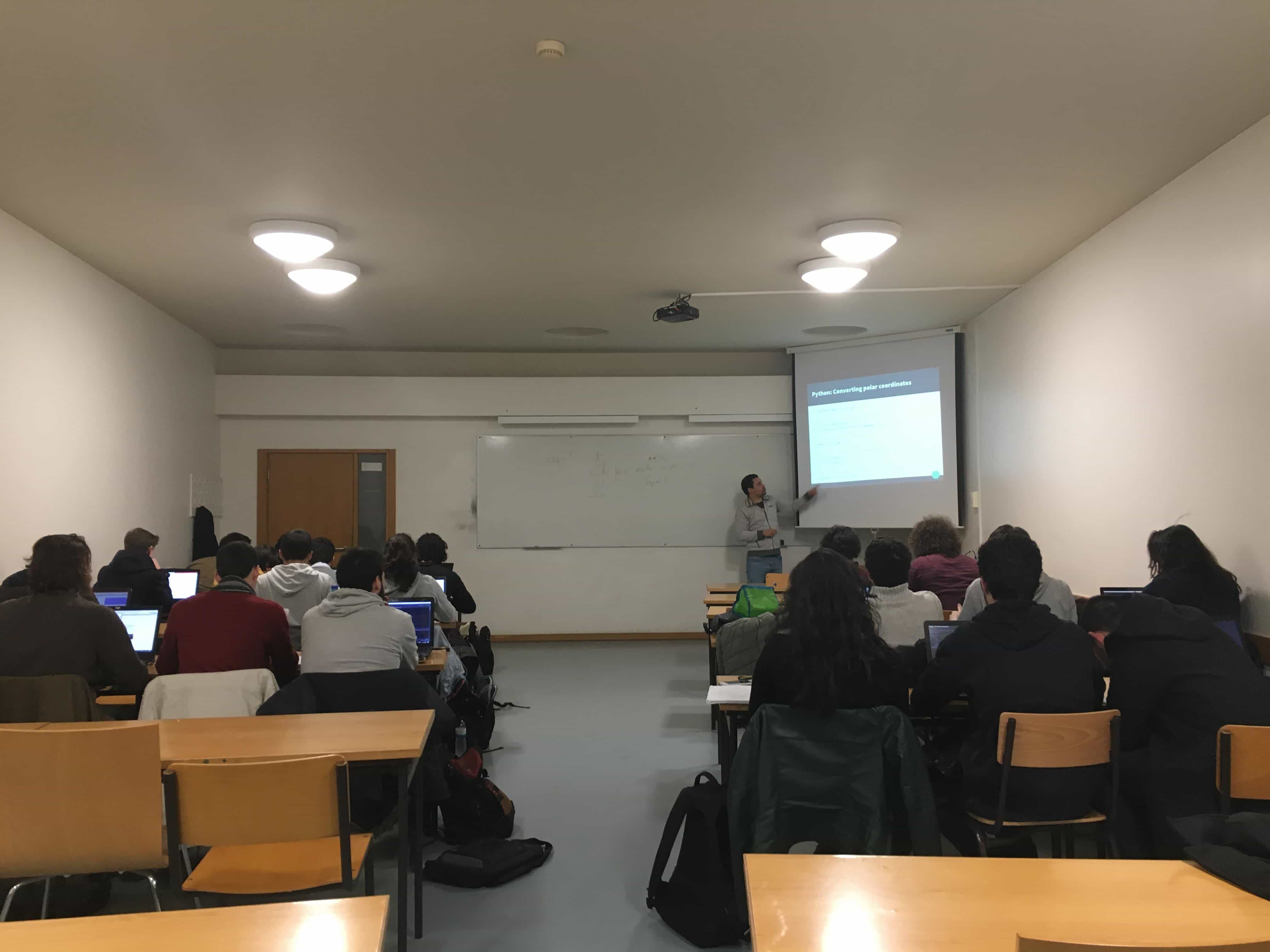
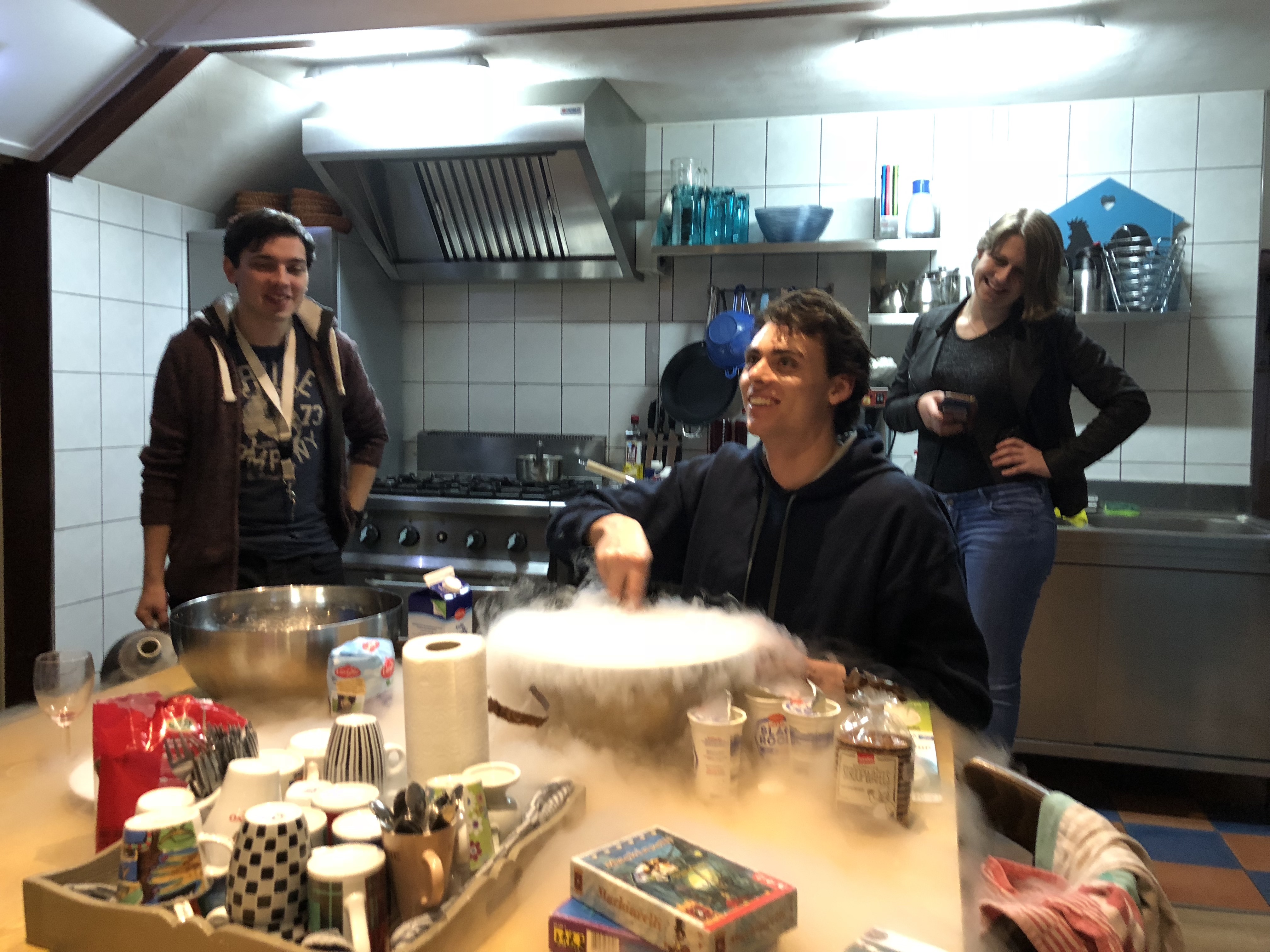
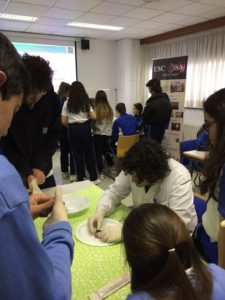

![report_famelab_6[1]](http://www.epsyoungminds.org/wp-content/uploads/2018/04/report_famelab_61-300x200.jpg)
![report_famelab_5[1]](http://www.epsyoungminds.org/wp-content/uploads/2018/04/report_famelab_51-300x225.jpg)
![report_famelab_4[1]](http://www.epsyoungminds.org/wp-content/uploads/2018/04/report_famelab_41-225x300.jpg)
![report_famelab_3[1]](http://www.epsyoungminds.org/wp-content/uploads/2018/04/report_famelab_31-169x300.jpg)
![report_famelab_2[1]](http://www.epsyoungminds.org/wp-content/uploads/2018/04/report_famelab_21-225x300.jpg)
